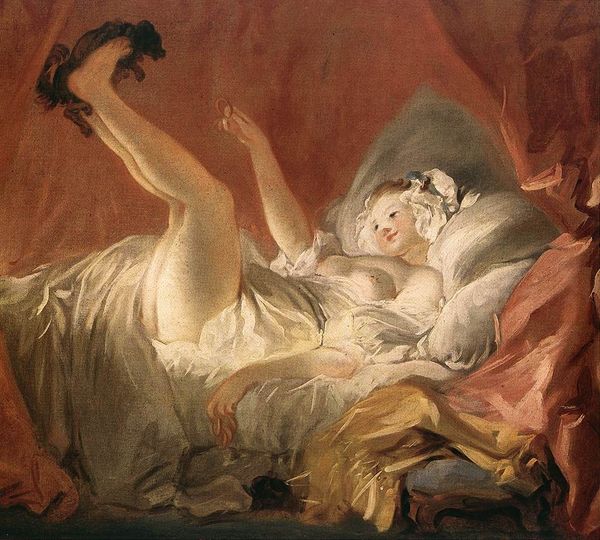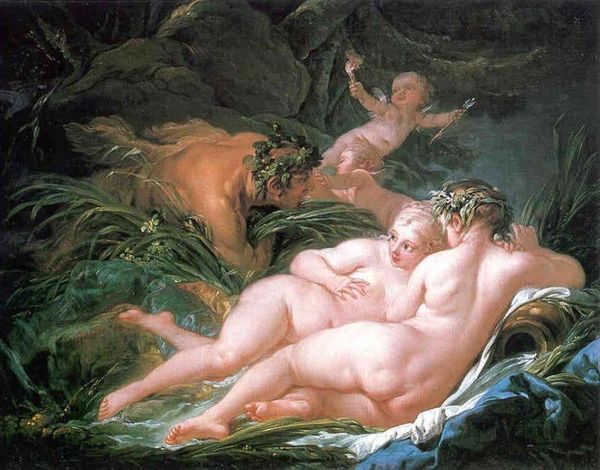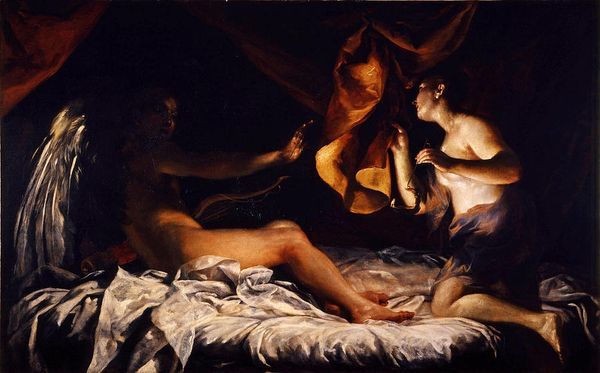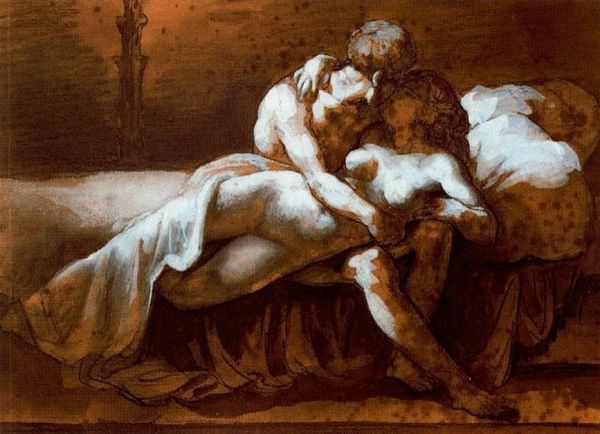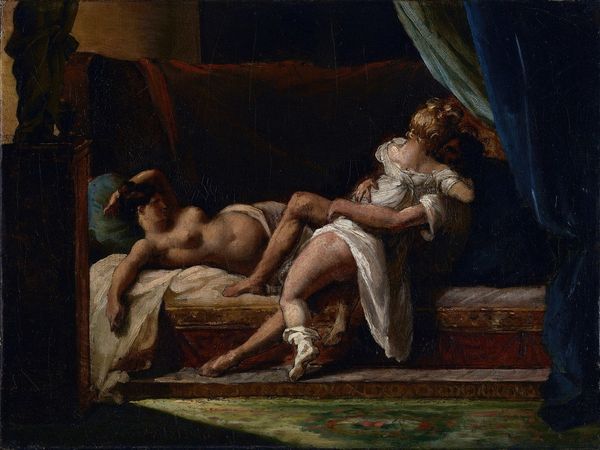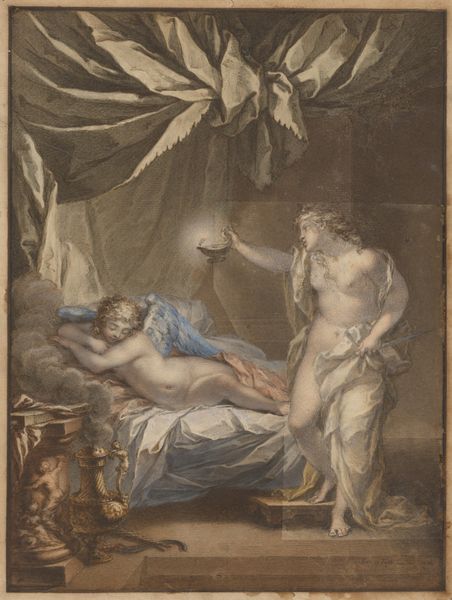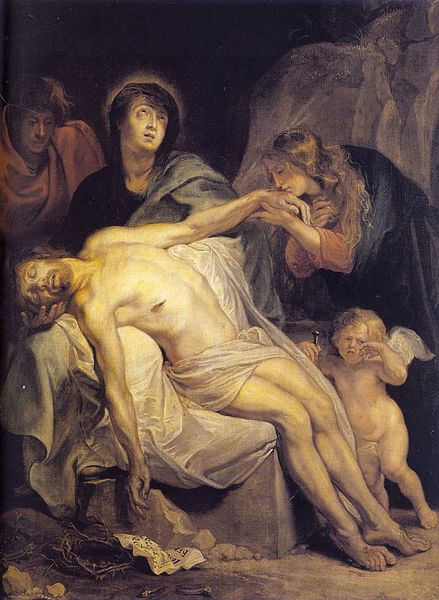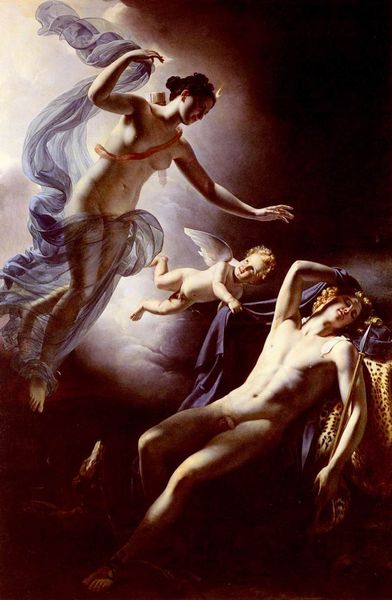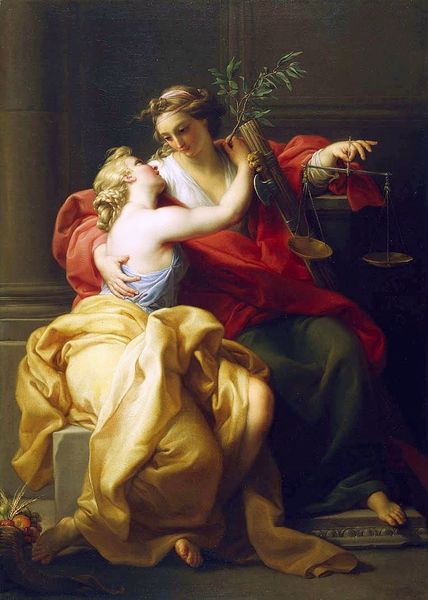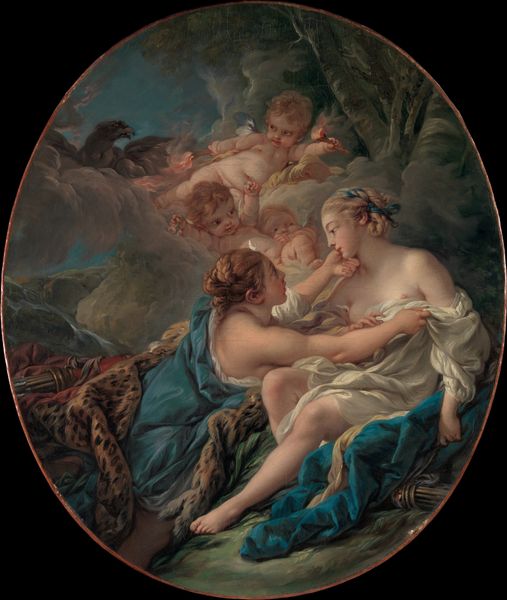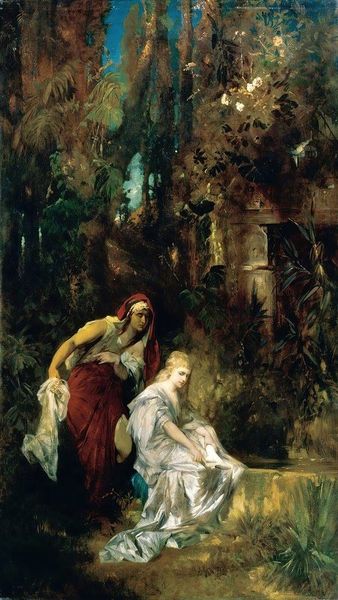
painting, oil-paint
#
allegory
#
painting
#
oil-paint
#
roman-mythology
#
mythology
#
history-painting
#
nude
#
rococo
Dimensions: 78 x 178 cm
Copyright: Public domain
Editor: Here we have Fragonard's "Cephalus and Procris", painted in 1755. It's oil on canvas and it portrays a tragic scene, quite dramatic. What strikes me is the theatrical lighting, but I’m curious to know how you interpret this work in its historical context? Curator: Well, think about the Rococo period, which loved ornamentation and lightheartedness. This piece, while visually aligned with Rococo’s soft brushstrokes and pastel colors, hints at a deeper engagement with mythology and societal values, typical of history painting in the 18th century. Fragonard created this work as his “reception piece” for the *Académie royale de peinture et de sculpture,* a powerful institution. It’s as if he's deliberately flexing his art historical knowledge. It gained him entry, marking the beginning of his official career, although he didn't enjoy making these types of paintings. Editor: So, this tragic love story served as a strategic career move? How does this painting stand in the context of public morality at the time? Curator: Exactly. This particular mythological moment - Procris, accidentally killed by her husband’s javelin while spying on him, is laden with lessons. Adultery and jealousy are vices, wifely obedience is the ideal, that kind of thing. Mythological subjects like this were often chosen for their potential to promote morality, especially to an aristocratic audience known for their decadent lifestyles. What is fascinating, do you think this moment of profound emotion will captivate the Royal Academy? Editor: That is a fascinating way of seeing the connection between artist intention and morality! Curator: Absolutely, and considering Fragonard later largely abandoned this high-minded genre for more intimate and even libertine paintings, one could say he passed his trial with flying colors and immediately took a sharp turn into art more interesting to himself and his patrons. This painting demonstrates that institutions definitely have an impact on what is considered great art.
Comments
No comments
Be the first to comment and join the conversation on the ultimate creative platform.
